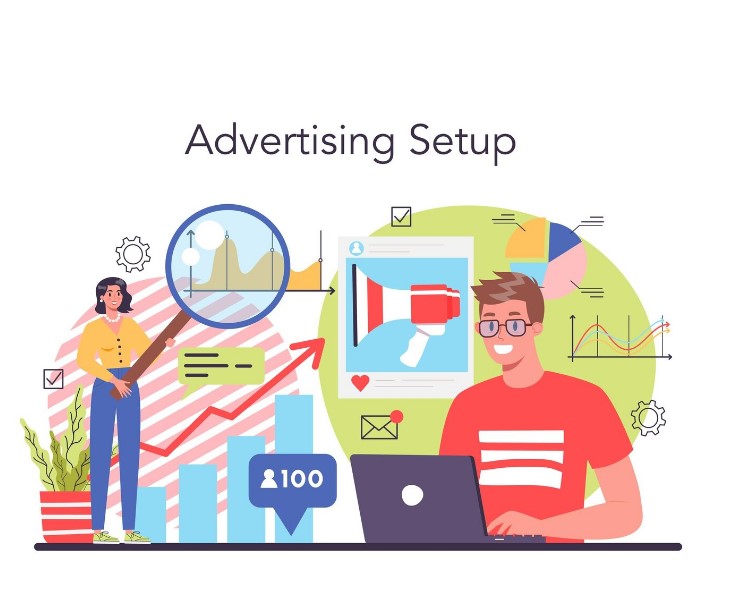
Maximize ROI with Marketing Strategies
September 26, 2024
Transform Reach with Smart Ads!
November 22, 2024
In today’s fast-paced digital landscape, the need for effective advertising has never been greater. Consequently, businesses are constantly vying for attention in an overcrowded market, making it essential to stand out. This is where Targeted Advertising Solutions come into play. By honing in on specific audiences, brands can achieve greater reach and engagement, ensuring their message resonates with the right people.
Moreover, Precision Ads represent a game-changing approach to advertising. Instead of casting a wide net and hoping for the best, these solutions focus on delivering tailored messages to distinct groups. As a result, this not only maximizes the potential for customer engagement but also unlocks the true power of your brand. In this blog post, we’ll explore the many facets of targeted advertising and how it can lead to better results for your campaigns.
Section 1: Understanding Targeted Advertising Solutions
What Are Targeted Advertising Solutions?
To begin with, Targeted Advertising Solutions refer to marketing strategies that focus specifically on distinct segments of an audience. Unlike traditional advertising methods, which often aim to reach a broad audience, targeted solutions allow brands to tailor their messages to particular demographics, interests, or behaviors. As a result, this targeted approach ensures that your ads reach the right people at the right time, significantly increasing the chances of engagement and conversion.
Types of Targeted Advertising
There are several types of targeted advertising, each designed to cater to different audience segments:
- Demographic Targeting: This involves targeting ads based on characteristics such as age, gender, income level, and education. By understanding who your audience is, you can craft messages that resonate with their specific needs and preferences.
- Behavioral Targeting: This approach focuses on users’ online behaviors, such as their browsing history, search queries, and interactions with previous ads. By analyzing these patterns, brands can deliver ads that align with users’ interests and intentions.
- Geographic Targeting: Location-based targeting allows businesses to reach consumers in specific geographic areas. Whether you’re a local store or an online retailer, understanding where your customers are located can help you tailor your marketing strategies effectively.
Why Traditional Advertising Methods Fall Short
Traditional advertising methods often struggle to deliver the desired results due to their broad focus. While they may reach a large audience, many of those impressions go to individuals who may not be interested in the product or service being advertised. Consequently, this inefficiency can lead to wasted ad spend and lower conversion rates. In contrast, Targeted Advertising Solutions provide a more strategic approach, allowing brands to invest their budgets where they will have the most impact.
Section 2: The Benefits of Precision Ads
Maximized Reach
First and foremost, one of the most significant advantages of Targeted Advertising Solutions is the ability to maximize reach. By focusing specifically on distinct audience segments, brands can connect with individuals who are most likely to be interested in their products or services. As a result, this tailored approach not only increases the likelihood of your ads being seen by those who matter most but also enhances brand visibility and awareness.
Enhanced Engagement
In addition to maximizing reach, Targeted Advertising Solutions lead to enhanced engagement. When advertisements are relevant to the audience, they are more likely to capture attention and provoke a response. For instance, brands that use precise targeting strategies often experience higher click-through rates and more meaningful interactions. Consequently, case studies have shown that companies implementing targeted campaigns see a significant uptick in customer engagement, as the content resonates more deeply with viewers.
Better ROI
Moreover, the cost-effectiveness of targeted advertising cannot be overstated. Unlike traditional methods that often result in wasted ad spend, Targeted Advertising Solutions help ensure that every dollar is invested wisely. By reaching only those who are likely to convert, brands can achieve a higher return on investment (ROI). In fact, statistics indicate that businesses utilizing targeted advertising often report lower customer acquisition costs and improved conversion rates, making it a smart choice for maximizing marketing budgets.
Section 3: Key Components of Precision Ads
Data Analytics
First and foremost, data analytics is a cornerstone of Targeted Advertising Solutions. By collecting and analyzing data on consumer behaviors, preferences, and demographics, brands can make informed decisions about their advertising strategies. Consequently, this data-driven approach allows businesses to identify trends and patterns that can be leveraged for more effective campaigns. As a result, using data analytics enables brands to refine their targeting and improve their overall advertising performance.
Audience Segmentation
In addition to data analytics, audience segmentation plays a crucial role in precision advertising. By dividing a broader audience into smaller, more specific segments, brands can tailor their messaging to resonate with each group. For example, a brand might segment its audience based on age, interests, or purchasing behavior. Therefore, this focused approach ensures that each segment receives relevant content, which enhances the likelihood of engagement and conversion. Ultimately, effective audience segmentation is key to maximizing the impact of Targeted Advertising Solutions.
Creative Strategies
Moreover, creative strategies are essential for the success of precision ads. Even the most well-targeted campaigns can fall flat without compelling content. Therefore, brands must invest in crafting engaging and relevant messages that speak directly to their audience’s needs and desires. This might include personalized ad copy, eye-catching visuals, or even interactive elements. By aligning creative strategies with targeted insights, businesses can significantly boost the effectiveness of their advertising efforts.
Section 4: Implementing Targeted Advertising Solutions
Step-by-Step Guide to Creating a Targeted Ad Campaign
Implementing Targeted Advertising Solutions effectively requires a structured approach. Therefore, here’s a step-by-step guide to help you create a successful targeted ad campaign:
- Research and Data Collection: First, begin by gathering data about your target audience. This includes demographic information, preferences, and online behaviors. Additionally, use tools like surveys, social media insights, and web analytics to compile this information.
- Defining Target Audience: Once you have the necessary data, define your target audience. Specifically, segment them based on relevant criteria, such as age, location, and interests. This segmentation is crucial for tailoring your messaging effectively.
- Crafting Compelling Ad Content: Next, create engaging and relevant ad content that speaks directly to your audience’s needs and desires. Ensure that your messaging aligns with the interests identified during the research phase for better resonance.
- Choosing the Right Platforms: After developing your ad content, select the platforms where your target audience is most active. For instance, this might include social media channels, search engines, or even email marketing. By choosing the right platforms, you can maximize your ad’s visibility.
Tools and Technologies for Effective Targeting
In addition to a well-structured plan, using the right tools and technologies is essential for implementing Targeted Advertising Solutions. Here are some popular options to consider:
- Ad Management Platforms: Tools like Google Ads and Facebook Ads Manager allow you to create, manage, and analyze your ad campaigns easily.
- Analytics Tools: Furthermore, utilize analytics platforms like Google Analytics to track the performance of your ads. These tools can provide valuable insights into audience engagement and conversion rates.
- CRM Software: Finally, Customer Relationship Management (CRM) software can help you maintain data on your leads and customers, allowing for more personalized advertising efforts.
Section 5: Measuring Success
Key Performance Indicators (KPIs) to Track
When implementing Targeted Advertising Solutions, measuring success is crucial for understanding the effectiveness of your campaigns. Therefore, it’s essential to identify key performance indicators (KPIs) that align with your advertising goals. Here are some important KPIs to consider:
- Click-Through Rate (CTR): First, this metric measures the percentage of users who click on your ad after seeing it. A higher CTR typically indicates that your ad is relevant and engaging.
- Conversion Rate: Additionally, this KPI tracks the percentage of users who take a desired action, such as making a purchase or signing up for a newsletter, after interacting with your ad. Monitoring this rate helps assess the effectiveness of your targeting and messaging.
- Return on Ad Spend (ROAS): Furthermore, ROAS measures the revenue generated for every dollar spent on advertising. This metric is vital for evaluating the overall profitability of your Targeted Advertising Solutions.
Tools for Analytics and Reporting
In addition to identifying KPIs, utilizing the right tools for analytics and reporting is essential for effectively measuring success. Here are some valuable tools to consider:
- Google Analytics: This powerful tool allows you to track website traffic, user behavior, and conversion rates, providing insights into how your ads perform.
- Ad Platform Analytics: Moreover, most advertising platforms, such as Facebook Ads and Google Ads, offer built-in analytics that provide real-time data on ad performance. These insights can help you make quick adjustments to optimize your campaigns.
- Marketing Dashboards: Finally, tools like HubSpot and Tableau can help you create comprehensive dashboards that consolidate data from various sources, allowing you to visualize your campaign’s performance easily.
Adjusting Strategies Based on Performance Data
Finally, it’s important to adjust your strategies based on the performance data you collect. By regularly reviewing your KPIs and analytics, you can identify areas for improvement and make informed decisions about your Targeted Advertising Solutions. For instance, if a particular ad set is underperforming, you might consider refining the audience segmentation or experimenting with different creative content.





